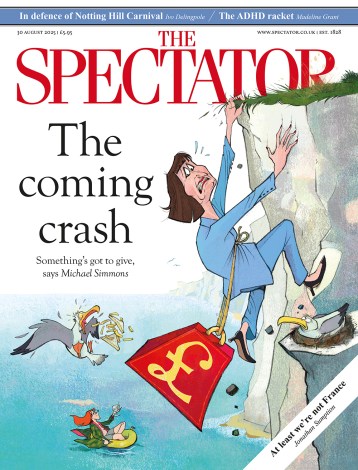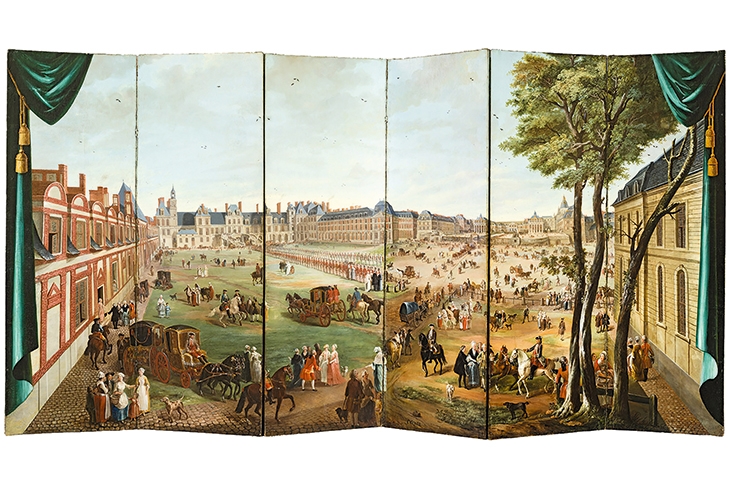The château at Versailles remained the grandest palace in the whole of Europe from the moment that Louis XIV established his court there in May 1682 until his great grandson Louis XVI was forced to leave by a mob of 30,000 in October 1789. Such was its reputation that Lord Chesterfield earnestly advised his son that ‘an hour at Versailles is now worth more to you than three hours in your closet with the best books that were ever written’. Embassies came from as far afield as Siam and Persia. Leather-bound engravings of the palace served as diplomatic gifts and spread its reputation throughout Europe. Every sovereign, leafing through his copy, simply had to recreate his own Versailles.
This collection of essays accompanies an exhibition at the Metropolitan Museum of Art, New York until 29 July. The themes include ambassadorial receptions, princes travelling incognito, tourists and guide books and, lastly, the Americans at Versailles during the last years of Louis XVI’s reign. Indeed, those plainly dressed and plain-speaking American delegations captivated the court and unwittingly contributed to the eventual fall of the French monarchy.
In theory, the King of France held absolute power but he remained remarkably accessible to his subjects, certainly in comparison with his English counterpart. Public spectacles included the king’s lever (ritual getting up) and coucher (going to bed), as well as the grand couvert, when both the king and queen dined, often, we are told, among a ‘crowd of hot and perspiring spectators’. The king attended daily Mass with ‘the most abject common people’ and could be approached afterwards by visitors with various personal requests.
European ambassadors were mostly received in the king’s bedchamber and those from Asia and elsewhere in the Hall of Mirrors. Indeed this room was so spectacular that an embassy of Amerindian chiefs could not believe that it had been made by man. But then embassies from exotic countries provided a fine spectacle for the public and an opportunity for the king to present diplomatic gifts, ranging from Gobelins tapestries to Sèvres porcelain and thus promote French luxury goods overseas.
Royal visits from abroad gave rise to endless elaborate rituals and rules of precedence, but one way round them for a king or crown prince was to travel incognito. Grand Duke Paul of Russia came as le Comte du Nord, and Gustav III of Sweden as le Comte de Haga. The latter carried out secret diplomatic missions and privately supped with Louis XVI and Marie Antoinette, although he is reputed to have bored them with his long-winded talk.
Comfort and hygiene prevailed in private apartments: in 1774 Lady Mary Coke found Louis XV’s daughters’ quarters ‘so clean, so finely finished & so agreeably situated that I almost envied them’. But public pomp and grandeur famously mingled with squalor — what the Revd William Cole in 1765 called the ‘dirty magnificence of Versailles’. In 1702 the Duchesse d’Orléans found it ‘impossible to leave one’s apartment without seeing somebody pissing’.
Because the court came to such an abrupt end on 6 October 1789, Visitors to Versailles inevitably has an elegiac feel to it. Themes include those of decay, of grand customs falling into disuse, and the advent of liberty and democracy with the arrival of the Americans, ending in revolution and slaughter. Versailles represents a bizarre combination of both absolute and openly accessed monarchy, where splendour and squalor jostled together. It is all beautifully written up and lavishly illustrated in this highly recommended book.






Comments